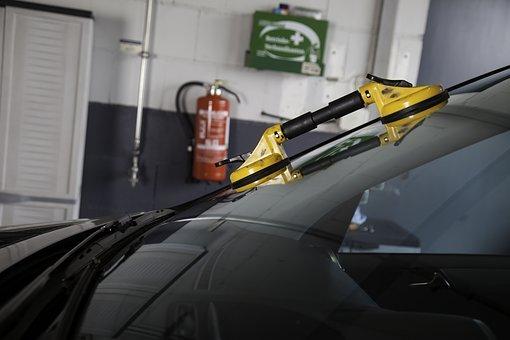Advanced Driver Assistance System (ADAS) Technology is one of the most fascinating smart tools employed by vehicle drivers these days. These intelligent systems utilize real-time data to inform drivers about road closures, traffic updates, and quicker routes to reach their destinations.
Remarkably, these smart systems can also check drivers’ distraction and fatigue levels, alerting them ahead of potential risks, suggesting ways to retain their focus on driving, and minimizing their fatigue. This helps prevent accidents and protect car windshields.
An advanced driver assistance system can also take control of the car after detecting possible threats and perform simple tasks, such as cruise control, overtaking, and parking. Here’s some essential information about these high-tech systems:
1. Significance of Advanced Driver Assistance System
The need for extensive implementation of advanced driver assistance systems is evident because the number of car accidents around the world is increasing rapidly, and human error is responsible for 94% of these accidents.
The security perspective is becoming even more critical now, and advanced driver assistance systems can play a crucial role in minimizing accidents.
The smart system’s advanced pedestrian detection and emergency braking system, parking assistance, broad surrounding views, and drowsiness detection of drivers can reduce human error and provide comprehensive security to vehicle drivers. Other key features and technologies of ADAS include:
Adaptive Cruise Control: Automatically adjusts the vehicle’s speed to maintain a safe distance from the car ahead.
Lane Departure Warning and Lane Keeping Assist: Alerts the driver if the vehicle begins to drift out of its lane and, in some cases, can gently steer the vehicle back into the lane.
Automatic Emergency Braking: Detects an impending collision with another vehicle or obstacle and automatically applies the brakes to reduce the severity of or avoid the collision.
Blind Spot Detection: Alerts drivers to vehicles in their blind spots, especially when changing lanes.
Rear Cross Traffic Alert: Warns drivers of approaching vehicles when backing out of a parking space.
Parking Assistance: Assists drivers in parking through guidance systems or by controlling steering during parallel or perpendicular parking.
Traffic Sign Recognition: Detects and reads road signs, displaying them on the driver’s display.
Pedestrian Detection Systems: Alert the driver and, in some cases, automatically apply brakes when pedestrians are detected in the vehicle’s path.
Driver Monitoring Systems: Monitor the driver’s attentiveness and can issue alerts if signs of drowsiness or distraction are detected.
Night Vision and Enhanced Visibility: Provide drivers with better visibility during night driving or in poor weather conditions.
2. Working with An Advanced Driver Assistance System
Autonomous vehicles have witnessed rapid technological advancements over the last few years. The applications designed and utilized for such advanced vehicles employ several chips, called ‘systems on a chip’ or SoCs. SoCs employ a single-integrated chip that consists of all the components of an electronic system.
These high-tech chips help connect vehicle actuators with the sensors, ensuring smooth gear changes and an overall smooth driving experience. Driverless cars have become one of the most popular technologies that employ advanced driver assistance systems to capture real-time 360-degree views in and around the vehicle’s proximity.

3. Applications of Advanced Driver Assistance System
Advanced driver assistance systems employ artificial intelligence (AI) technology and embedded vision to identify people and objects on roads and their surroundings. They help initiate a quicker response than human drivers.
The adaptive cruise control application embedded in this intelligent system is particularly useful for controlling vehicle speeds and maintaining them below the highways’ speed limits. Also, the glare-free technology can adjust the light intensity of vehicles according to the darkness in the surroundings.
Automatic parking is another brilliant technology embedded in advanced driver assistance systems, allowing hassle-free parking for drivers.
Advanced Driver Assistance System Conclusions

(ADAS) represent a significant leap forward in automotive safety and efficiency. By integrating a variety of sensors and sophisticated algorithms, ADAS offers crucial features such as adaptive cruise control, lane-keeping assistance, automatic emergency braking, and blind spot detection. These systems not only enhance driver awareness and reaction times but also actively work to prevent accidents. Furthermore, the incorporation of parking assistance, traffic sign recognition, pedestrian detection, and driver monitoring underscores the commitment to comprehensive safety and convenience. As these technologies continue to evolve, they lay the groundwork for the future of autonomous driving, promising a reduction in road accidents and a transformation in the overall driving experience. ADAS, therefore, stands as a pivotal development in the journey towards safer, more efficient, and intelligent vehicles.
Are you missing out on the advanced driver assistance system and growing tired of the frequent windshield cracks caused by accidents? Crystal Glass provides excellent emergency glass repairs, auto glass replacements, and windshield replacements to their customers. We take pride in assisting our valuable clients in fixing their windshield rock chips and cracks. Contact us for affordable auto glass replacement quotes from one of the finest auto glass repair services in Edmonton.



